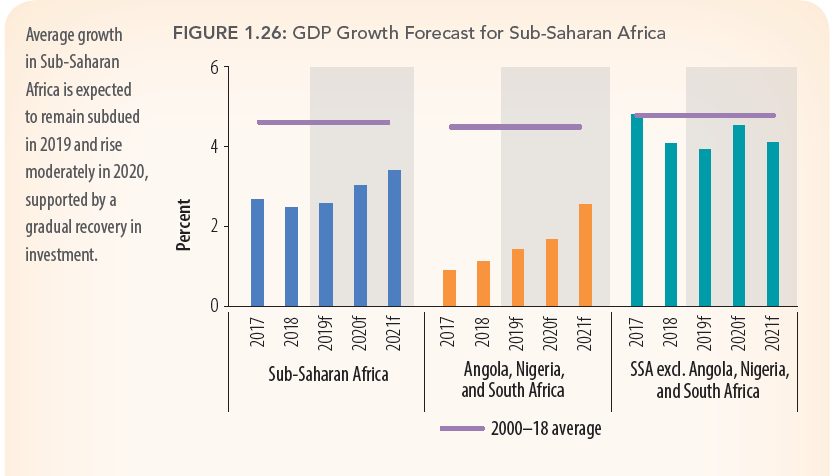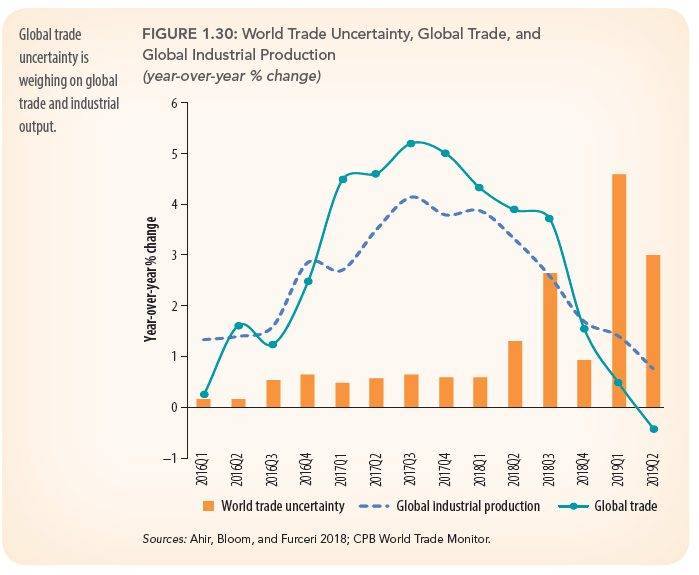#ChartOfTheWeek – Sub Saharan Africa Economic Growth

Welcome to the first inaugural Chart of The Week segment which will highlight the important numbers in charts and graphs that have been published this week. This data hub will enable you to ‘see’ what issues are affecting the region.

This week, the World Bank released its Africa’s Pulse 2019 report which included several statistics on how global trade wars are affecting the continent. The world is a global village and no country is immune from trade spats, especially between the US and China, and the impending Brexit plans.
According to this figure, Angola, Nigeria and South Africa have a slower growth rate than most of Sub Saharan Africa. The three countries have contributed to the sluggish behaviour of the overall growth prospects for the region.
However, according to the chart, the economies will improve in the next couple of years.

Trade uncertainty has a direct effect on global trade as seen in the above image. Below is an excerpt from the World Bank report, summarising the knock-on effect of trade tensions.
Global growth has continued to soften, reflecting decelerating economic activity in advanced economies and emerging markets and developing economies (EMDEs). Global trade and manufacturing have slowed down markedly. A continued deterioration in the global manufacturing Purchasing Managers’ Index (PMI) and business confidence suggests that industrial activity will remain subdued for the rest of 2019. Amid rising policy uncertainty, due to the renewed intensification of trade tensions in the world economy, global growth prospects have weakened, commodity prices have declined, and capital flows to EMDEs have slowed. These headwinds are expected to weigh on activity in Sub-Saharan Africa.
Feature Image Courtesy: Cardiff University